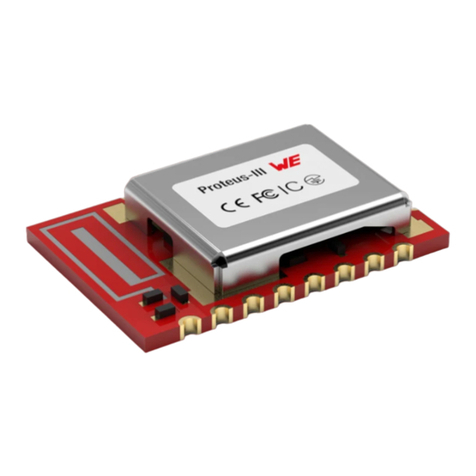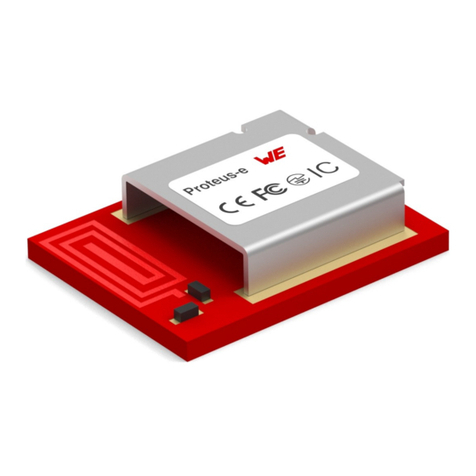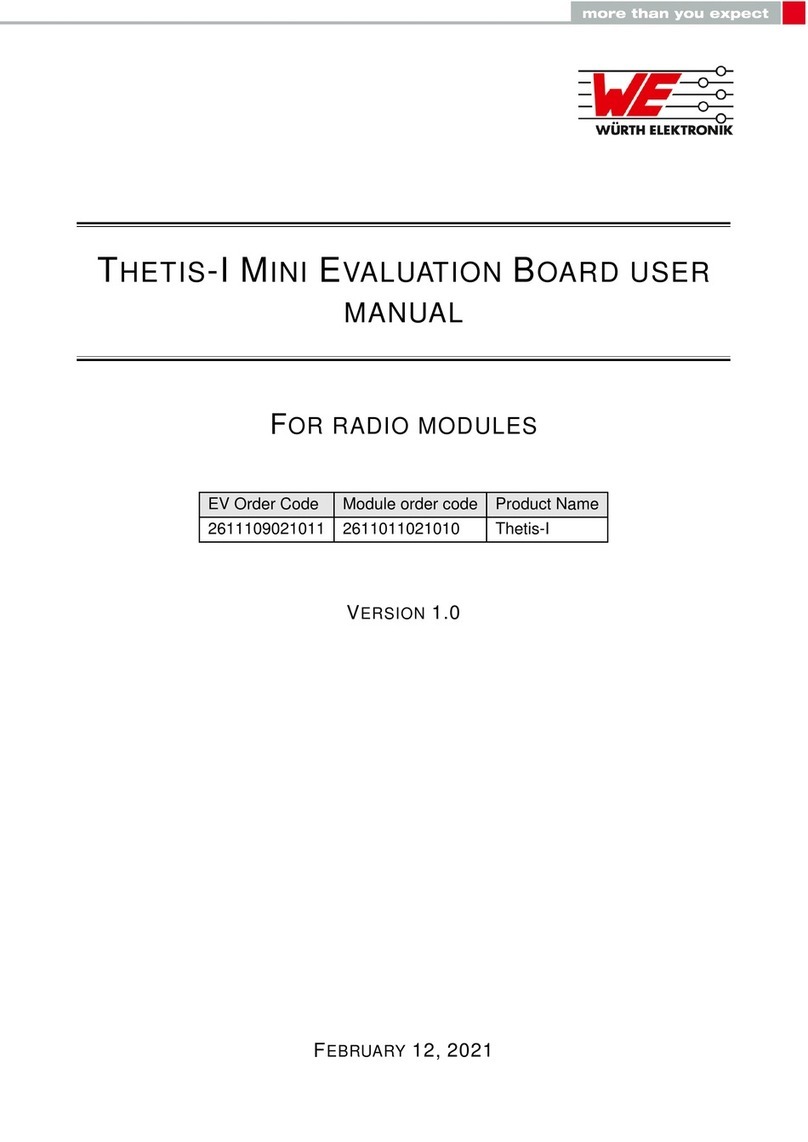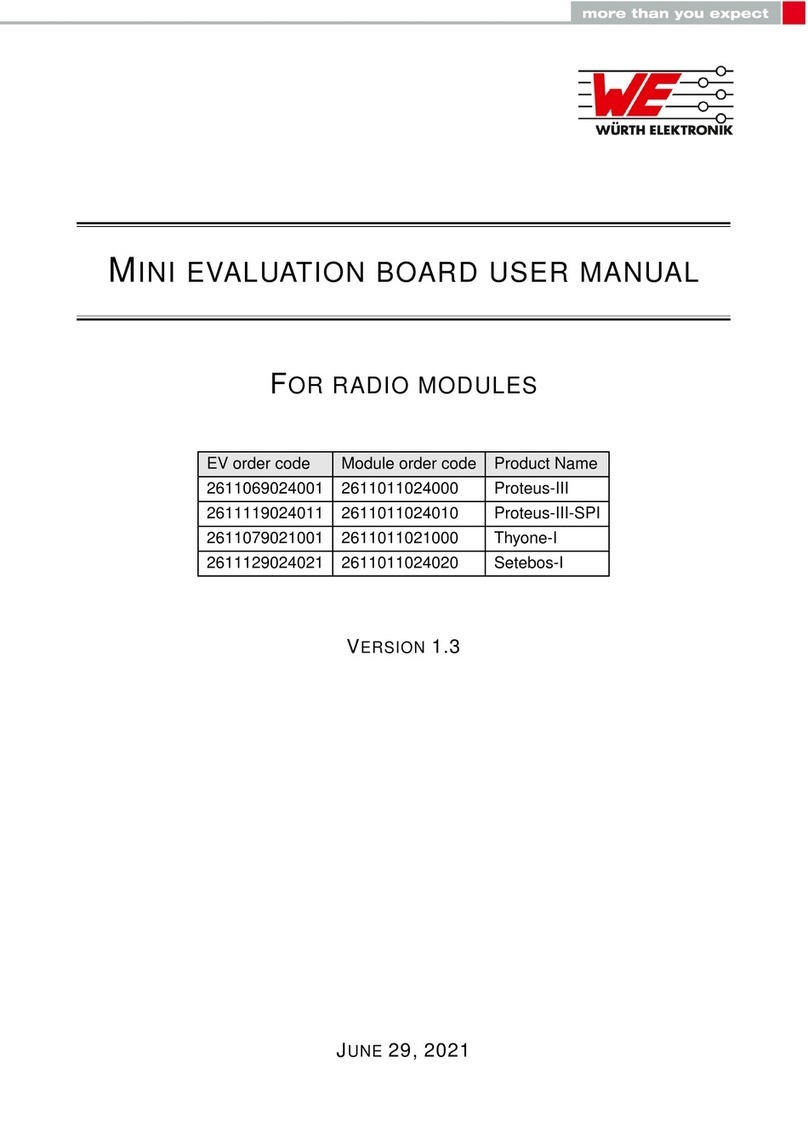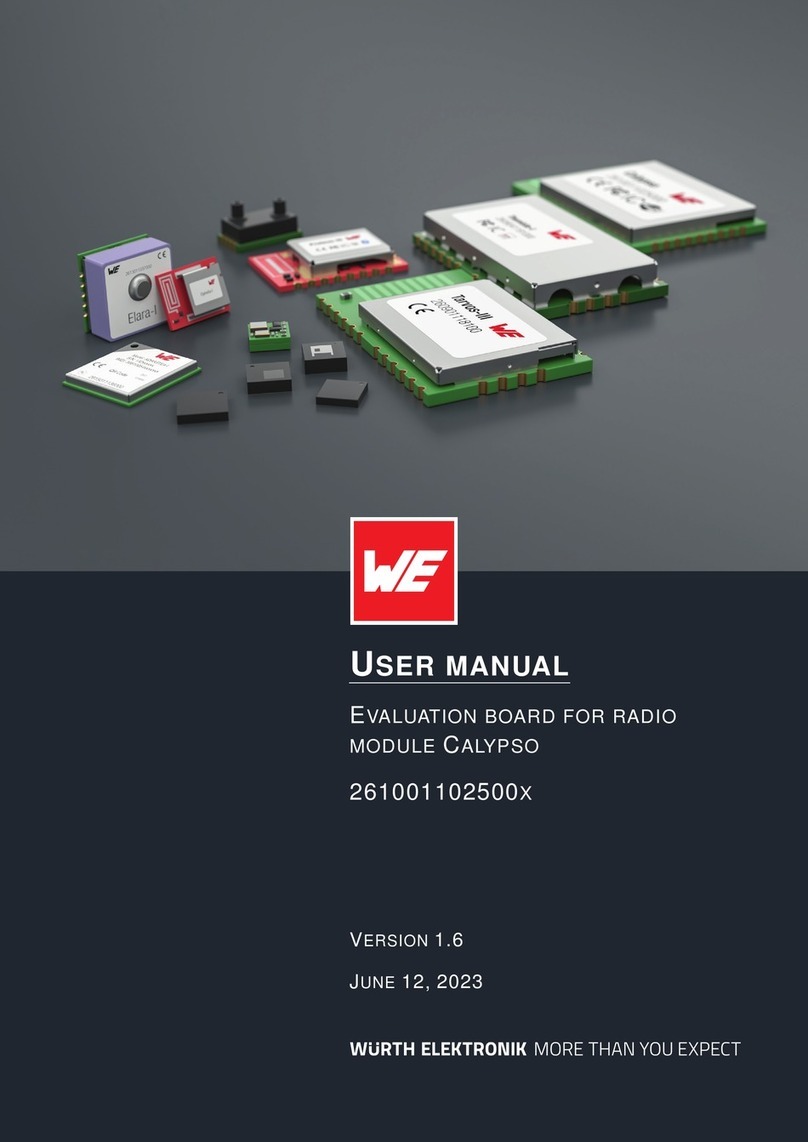
Contents
1 Supported radio modules 5
2 Functional description 7
2.1 Takingintooperation............................... 7
3 Development board 8
3.1 Blockdiagram................................... 8
3.2 Jumpers...................................... 9
3.3 Connectors and pin headers . . . . . . . . . . . . . . . . . . . . . . . . . . . 11
3.3.1 CON1 .................................. 12
3.3.2 CON2 .................................. 12
3.3.3 CON3 .................................. 12
3.3.4 CON4 .................................. 13
3.3.5 CON5 .................................. 13
3.3.6 CON6 .................................. 14
3.4 Buttons ...................................... 16
3.4.1 RESETbutton.............................. 16
3.4.2 WAKE-UPbutton ............................ 17
3.5 Functionblocks.................................. 17
3.5.1 Powersupply .............................. 17
3.5.1.1 Bus powered, power supply through USB . . . . . . . . . . . . 17
3.5.2 JP1 - Current measurement . . . . . . . . . . . . . . . . . . . . . . 17
3.5.3 UART/USB............................... 17
3.5.4 UARTdirect ............................... 17
3.5.5 LFXOcrystal .............................. 18
3.5.6 NFC ................................... 19
3.5.7 Programming interface . . . . . . . . . . . . . . . . . . . . . . . . . 19
3.6 Long Range Measurement - Thyone-I . . . . . . . . . . . . . . . . . . . . . 20
3.7 Schematic..................................... 21
3.8 Layout....................................... 23
3.9 Billofmaterials.................................. 25
4 Regulatory compliance information 27
4.1 EuropeanConformity............................... 27
4.2 FCC ........................................ 27
4.3 Exemptionclause................................. 27
5 Important notes 28
5.1 General customer responsibility . . . . . . . . . . . . . . . . . . . . . . . . . 28
5.2 Customer responsibility related to specific, in particular safety-relevant ap-
plications ..................................... 28
5.3 Best care and attention . . . . . . . . . . . . . . . . . . . . . . . . . . . . . 28
5.4 Customer support for product specifications . . . . . . . . . . . . . . . . . . 28
5.5 Productimprovements.............................. 28
5.6 Productlifecycle ................................. 29
5.7 Propertyrights .................................. 29
5.8 General terms and conditions . . . . . . . . . . . . . . . . . . . . . . . . . . 29
6 Legal notice 30
6.1 Exclusionofliability................................ 30
PROTEUS-III/THYONE-I Evaluation board user manual version 1.4 © February 2021
www.we-online.com/wireless-connectivity 3
